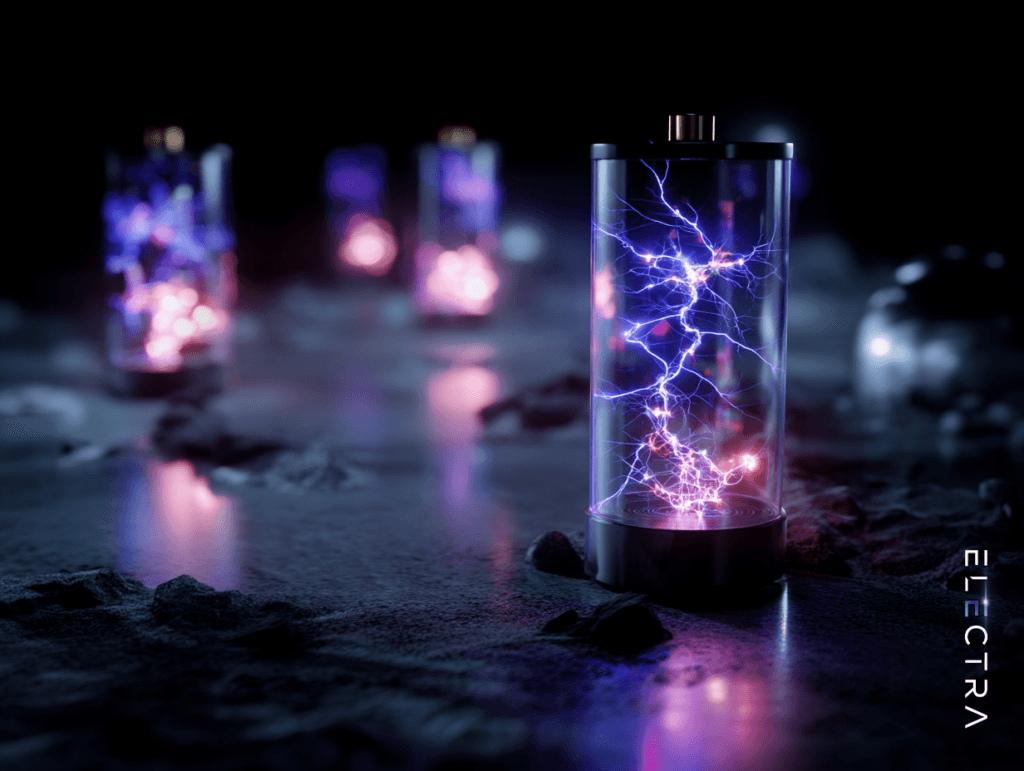As we move deeper into a distributed, digital, and decarbonized world, batteries are no longer just backup but foundational infrastructure. And nowhere is this evolution more visible than in data centers and Battery Energy Storage Systems (BESS), where uptime, responsiveness, and resilience are non-negotiable.
Data centers now account for over 2% of global electricity consumption, a figure expected to triple by 2030 as AI workloads and cloud infrastructure surge,as reported by International Energy Agency. The shift toward on-site renewables and intelligent storage isn’t just about ESG; it’s a strategic necessity for business continuity.
Batteries, especially those augmented with AI-driven management platforms, are rapidly becoming essential to deliver:
- Seamless failover in milliseconds
- Active participation in demand response
- Renewable balancing and peak shaving
- Diesel-free resilience with lower emissions.
But with the rise of new chemistries – sodium-ion, ultracapacitors, solid-state, and advanced lithium derivatives – comes new complexity. Each chemistry introduces unique degradation behaviors, operating profiles, and safety considerations. Relying on legacy monitoring systems built for yesterday’s batteries is no longer viable.
Intelligence is the Differentiator
Every battery is a living, electrochemical system. What’s changing isn’t the chemistry, but our ability to understand and optimize it in real time.
That’s where analytics comes in. Metrics like:
- State of Health (SoH) – How well is the battery aging?
- State of Charge (SoC) – What’s available now?
- Remaining Useful Life (RUL) – How much longer will it perform?
…are becoming the new decision layer. They enable operators to look beyond static capacity and into performance, predictability, and profitability.
Platforms like Electra’s EVE-Ai™ are already empowering this transition. By combining digital twins, machine learning, and chemistry-specific models, they allow:
- Real-time prediction of faults before they happen;
- Dynamic optimization of charge/discharge based on real-world behavior;
- Tailored strategies for each battery, even in hybrid chemistries.

Why Batteries Are Strategic to Data Centers
Data centers are the digital factories of the modern economy. From powering financial services and cloud computing to training large AI models, they demand constant, clean, high-quality power.
As power densities rise and carbon targets loom, traditional diesel redundancy is no longer a sustainable or acceptable option. Here’s how batteries are reshaping data center energy strategy:
- Business Continuity
Outages cost between $100,000 and $1 million per hour (Uptime Institute). Batteries ensure zero-latency backup and far outperform generators in response speed.
- Grid Optimization
Batteries enable energy arbitrage and participation in flexibility markets, charging during off-peak hours and discharging when grid stress is high or power is expensive.
- Renewable Integration
Solar and wind are intermittent. Batteries smooth out variability, ensuring continuous uptime while reducing reliance on fossil energy.
- Sustainability and Compliance
Diesel generators are costly, carbon-intensive, and increasingly restricted. Emerging chemistries offer cleaner, scalable alternatives with faster cycles and longer life.
- Power Quality
AI workloads are sensitive to power fluctuations. Batteries help stabilize voltage, regulate frequency, and reduce wear on critical server infrastructure.
In short, batteries are no longer a fail-safe. They are a core enabler of operational agility and environmental leadership.

Uptime Is the New Currency
In today’s hyperconnected economy, milliseconds matter. A single point of failure in a data center can ripple through supply chains, financial markets, and public trust.
As BESS systems become embedded in the digital backbone, they must evolve from passive buffers to adaptive energy actors.
But here’s the inflection point:
- Can you anticipate degradation before availability drops?
- Can you balance performance and lifespan dynamically, not just monitor them?
- Can your system adapt to real-world loads, environmental factors, and shifting chemistries?
“Indeed, the value of storage isn’t in capacity—it’s in intelligence.” If not, you’re not managing a battery, you’re managing a blind spot.
The Rise of Non-Lithium Chemistries: Opportunity Meets Complexity
Next-gen chemistries like sodium-ion and ultracapacitors promise faster charging, improved safety, and lower environmental impact. But they also introduce:
- Non-linear aging curves
- Unique thermal behavior
- Different charge acceptance profiles.
Managing them with lithium-first systems is like driving a high-performance EV with a legacy combustion dashboard.
What’s required is a chemistry-agnostic, AI-native intelligence layer, one that learns from battery behavior, adjusts control parameters on the fly, and tunes each cell and stack to its optimal performance window.
Electra’s EVE-Ai™ is already pioneering this shift, enabling hybrid energy stacks to work cohesively, safely, and profitably, regardless of chemistry.

From Reactive to Adaptive: A New Operating Model
The future of energy storage isn’t static. It’s dynamic, decentralized, and adaptive. Forward-thinking data centers are adopting a new model:
- From monitoring to modeling;
- From reaction to anticipation;
- From one-size-fits-all to real-time personalization for every asset.
In this model, each battery system gets its own digital twin, a living model that adjusts with usage, climate, and business demands. Maintenance becomes predictive, performance becomes optimized, and value becomes scalable.

Final Thought: Visibility is the First Step to Trust
In an era where uptime defines reputation and energy intelligence shapes resilience, batteries can no longer be treated as black boxes. Whether you’re managing a hyperscale data center or deploying BESS at the grid edge, trust in your storage systems begins with deep, continuous visibility, not just into energy levels, but into health, degradation, and future performance.
This is where Electra makes the difference. With our AI-powered platform EVE-Ai™, we deliver a chemistry-agnostic intelligence layer that transforms batteries into self-aware, strategic assets. Through real-time analytics, and AI, operators can:
- Predict failure before it happens (up to 3 months in advance)
- Extend battery life while optimizing performance (up to 40% extension in battery life)
- Adaptively manage hybrid stacks – from lithium-ion to sodium-ion to ultracapacitors
- Maximize ROI while reducing operational risk (up to 30% increase).
EVE-Ai brings the brain to your batteries.
Because in the future of energy and digital infrastructure, analytics isn’t an add-on—it’s the enabler. And the smartest battery is the one that tells you not just how much energy it holds, but how much value it can still unlock.
Smart storage starts here. Smart storage starts with Electra.

